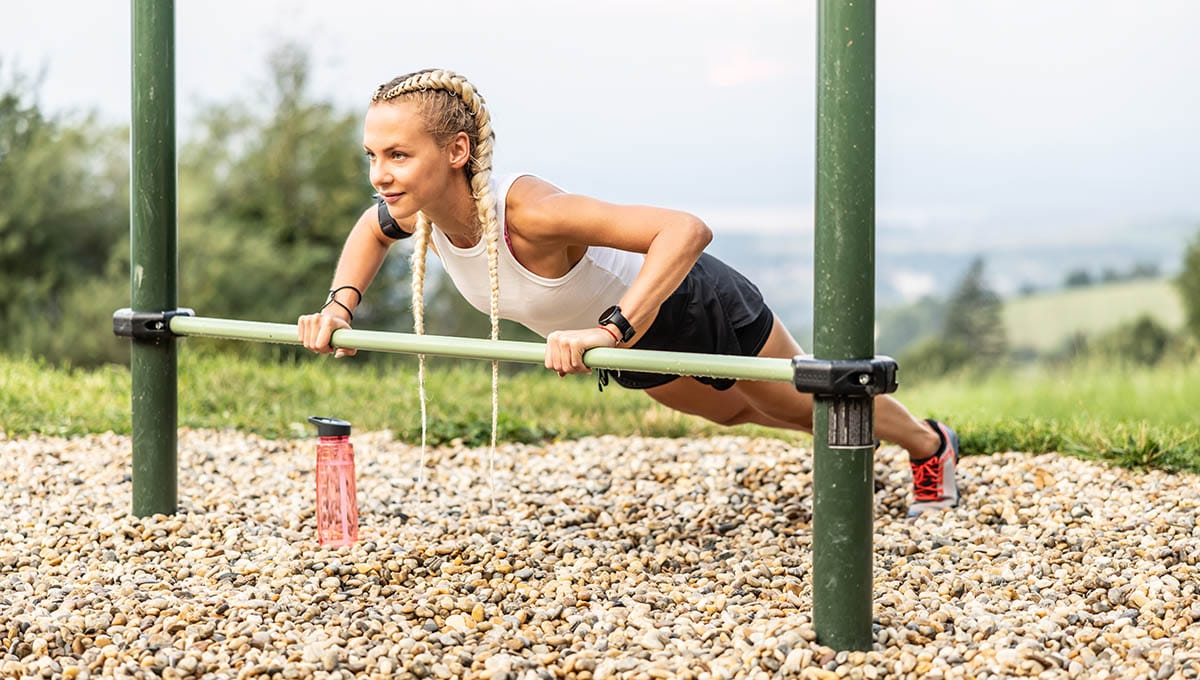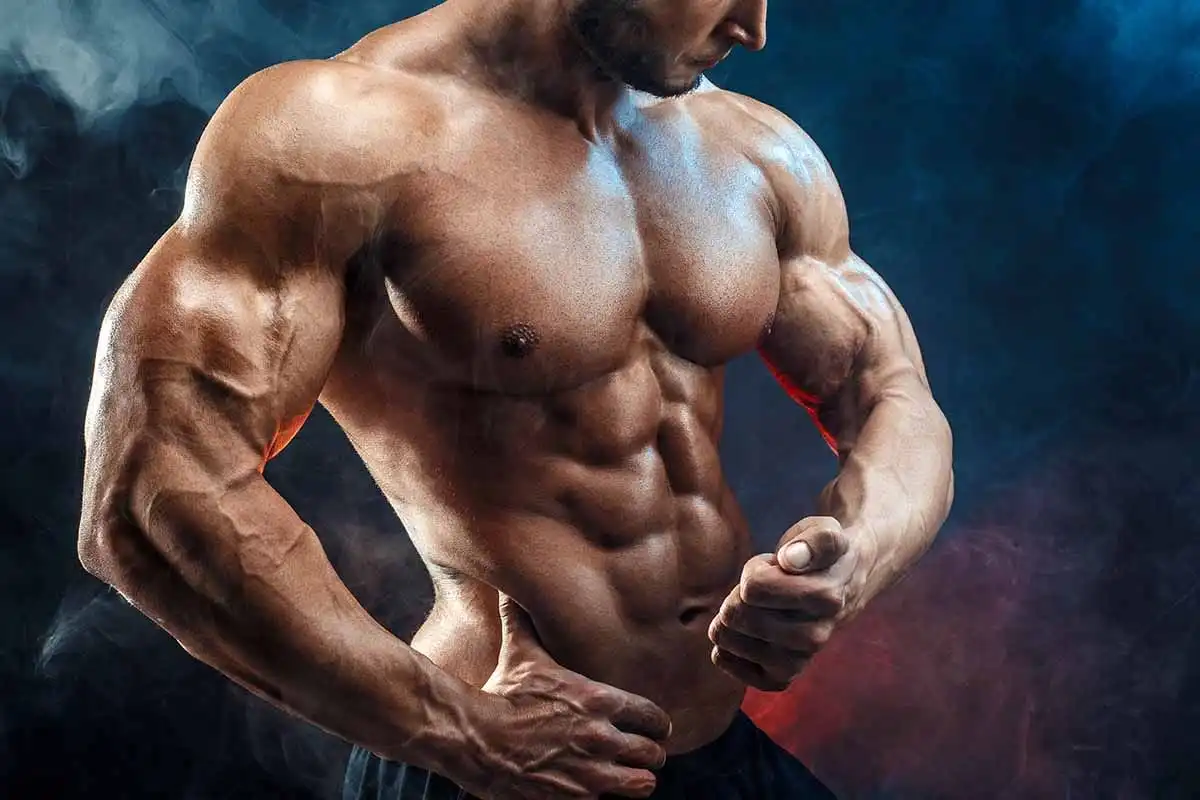How to Start Calisthenics: A Guide to Bodyweight Fitness
If you've been scrolling through social media or watching workout videos online, you've probably stumbled upon those incredible calisthenics athletes. You know, the ones who seem to defy gravity with their impressive bodyweight moves?
Well, if you're curious about how to start calisthenics and unleash your own inner strength, you're in the right place. This guide will walk you through everything you need to know to get started with calisthenics, from the basics to building your own workout routine. So, let's dive in and get moving!
What is Calisthenics?
Calisthenics is a form of exercise that uses your body weight as resistance. Unlike traditional weightlifting, where you rely on dumbbells or machines, calisthenics focuses on movements like dips, push-ups, pull-ups, squats, and a lot of time under tension.
The beauty of calisthenics is its simplicity and versatility. You can do it anywhere, no dumbbell or gym membership is required. Plus, it builds functional strength, improves flexibility, and enhances coordination.
History of Calisthenics
Calisthenics has been around for centuries, with roots tracing back to ancient Greece. The word itself comes from the Greek words "kallos," meaning beauty, and "sthenos," meaning strength. The Greeks used calisthenics as a form of training for athletes and warriors, emphasizing the development of both physical prowess and aesthetic form. Fast forward to today, and calisthenics has evolved into a popular fitness discipline, celebrated for its ability to transform the scrawny physiques into Greek god bodies.
Benefits of Calisthenics
Before we jump into the how-to, let's talk about why calisthenics is worth your time:
- Accessibility: All you need is your body and maybe a pull-up bar. You can work out at home, in the park, or even in your office if you have that kind of liberty.
- Functional Strength: Calisthenics improves your ability to perform everyday activities by strengthening multiple muscle groups simultaneously.
- Flexibility and Mobility: Many calisthenics exercises promote greater flexibility and joint mobility, reducing the risk of injuries.
- Scalability: Whether you're a beginner or advanced, calisthenics can be adjusted to match your fitness level.
- Cost-Effective: No need for expensive gym memberships or equipment.
- Improved Body Awareness: Calisthenics requires a high level of control and coordination, which helps you develop better body awareness and balance.
- Mental Toughness: The discipline and perseverance needed to master calisthenics exercises can also boost your mental resilience.

Getting Started: The Basics
Here are the main tips on how to start calisthenics:
1. Assess Your Fitness Level
Before you start, it's important to understand where you stand fitness-wise. Can you do a few push-ups or hold a long lever plank for 30 seconds? Knowing your starting point will help you tailor your training plan.
Take note of any physical limitations or past injuries that might affect your ability to perform certain exercises. This self-assessment will guide you in choosing the right exercises and intensity level to begin with.
2. Master the Basics
Start with fundamental exercises that form the foundation of calisthenics. These include:
- Push-Ups: Great for building upper body strength. Begin with knee push-ups if necessary and progress to full push-ups as you get stronger. Focus on keeping your body in a straight line from head to heels, and engage your core throughout the movement.
- Pull-Ups: Excellent for your back and biceps. If you can't do a pull-up yet, start with assisted pull-ups or negative pull-ups. Use a resistance band or a chair to help you build strength gradually.
- Squats: It's a compound glute exercise, perfect for leg, and especially quad strength. Focus on form and depth, and, unless you’re on the knees-over-toes program, ensure your knees don't extend past your toes. Keep your chest up and your weight on your heels.
- Planks: Essential for core stability. Start with 20-30 seconds and gradually increase the duration. Ensure your body forms a straight line from head to heels, and avoid letting your hips sag.
- Bodyweight Dips: Ideal for triceps and chest. Use parallel bars or a sturdy chair. Keep your elbows close to your body and lower yourself slowly to maximize muscle engagement.

3. Create a Routine
A simple beginner routine might look like this:
- Warm-Up: 5-10 minutes of light cardio (jogging, jumping jacks) and stretches. This increases your heart rate and prepares your muscles for the workout.
- Workout:
- Push-Ups: 3 sets of 5-10 reps
- Pull-Ups: 3 sets of 3-5 reps (assisted if needed)
- Squats: 3 sets of 10-15 reps
- Planks: 3 sets of 20-30 seconds
- Dips: 3 sets of 5-10 reps
- Cool Down: Stretch all major muscle groups. This aids in recovery and helps prevent soreness.
4. Progress Gradually
As you become comfortable with the basics, it's time to step up your game. Here are a few ways to progress:
- Increase Reps or Sets: Gradually add more repetitions or sets to your routine. This ensures continuous improvement and challenges your muscles.
- Try Variations: Incorporate different variations of the basic exercises, like diamond push-ups or pistol squats. These variations target muscles differently and prevent workout monotony.
- Add New Moves: Once you've mastered the basics, try more advanced moves like handstands or muscle-ups. These exercises require greater strength and coordination, pushing your limits further.

Tips for Success
- Consistency is Key: Aim to work out at least three times a week. Consistency will yield the best results. Make it a habit, and you'll see steady progress over time.
- Focus on Form: Proper form prevents injuries and ensures you're working the right muscles. Take your time to learn the correct techniques before increasing intensity.
- Listen to Your Body: Rest when needed and avoid overtraining. Your body needs time to recover and grow stronger. Pay attention to signs of fatigue or discomfort.
- Stay Patient and Motivated: Progress in calisthenics can be slow but don't get discouraged. Celebrate small victories along the way. Keep track of your improvements with the Flex APP to stay motivated.
- Join a Community: Engaging with others who are also into calisthenics can provide support, motivation, and tips. Whether it's an online forum or a local workout group, sharing your journey can be incredibly rewarding.
Frequently Asked Questions (FAQ)
Q: Do I need any equipment to start calisthenics?
A: The beauty of calisthenics is that you need minimal equipment. A pull-up bar is helpful for exercises like pull-ups and hanging leg raises. Other than that, you can use your body weight for most exercises. As you progress, you might consider investing in resistance bands or parallettes for more variety.
Q: How long does it take to see results?
A: This varies from person to person, depending on factors like your starting fitness level, diet, and consistency. Generally, you might start noticing changes in strength and muscle tone within a few weeks. Visible changes in muscle definition might take a couple of months of consistent training.
Q: Can I combine calisthenics with other forms of exercise?
A: For sure! Calisthenics can complement other fitness activities like running, yoga, or weightlifting. It enhances functional strength and flexibility, which can improve performance in other disciplines.
Q: Is calisthenics suitable for weight loss?
A: Yes, calisthenics can aid in weight loss, especially when combined with a balanced diet. It helps build muscle, which can increase your metabolism and burn more calories at rest.
Q: How do I prevent injuries while doing calisthenics?
A: Focus on proper form and technique, especially when learning new exercises. Warm up before workouts and cool down afterward. Listen to your body and rest if you feel any pain or discomfort. Gradually increase the intensity to avoid overloading your muscles and joints.
Final Word
I hope this article has helped you better understand how to start your calisthenics journey. This is an exciting journey towards building strength, flexibility, and a more toned physique.
With dedication and the right approach, you'll be performing impressive moves in no time. Remember, every expert was once a beginner. So lace up your sneakers, find a sturdy pull-up bar, and let your body become the ultimate workout tool.
We’ve made it simple to work on customized fitness plans or to introduce a little friendly competition to your fitness community by sharing exercises with your friends. Get started for free through the Flex fitness app.
Related articles
6-Day Gym Workout Schedule: Maximize Your Fitness
2-Day Split Workout: Your Guide to Efficient Gains
How to Flex Shoulders: Pose Like a Pro Bodybuilder


Get fit with Flex
Build muscle & lose weight fast for free.
Available on iPhone + Apple Watch





